To anyone who swore and panicked their way through the original Red Orchestra modification back in 2004, or its commercial release, Red Orchestra: Ostfront, back in 2006, the upcoming sequel Red Orchestra: Heroes of Stalingrad should represent a big deal.To anyone with no idea what Red Orchestra is, let me help out: It’s a multiplayer FPS, set on the Eastern front of World War 2, which captures above all else the grayness and desperation of those nightmare battlefields. Red Orchestra is a game of wincing at suppressive fire, of bayonet attacks, and of struggling to figure out whether that figure is a German or a Russian because muddy gray and muddy brown often look the same in dim lighting.The sequel’s looking to expand on everything that made the original game great, including its horrific tank combat. Here, we present an exclusive interview with Tripwire President John Gibson, in which he talks freely on the as-of-yesterday unrevealed vehicle combat coming in the sequel.
RPS: You mentioned that you plan to set the standard of tank combat in FPS games for years to come. How, exactly?
John Gibson: The big thing we’re doing with tanking for ROHOS is to really immerse the player in what it was like to be an actual soldier inside of one of these lumbering beasts in World War 2. The typical FPS tanking experience generally has the player viewing the tank from third person, and the player essentially feels like they ARE the tank rather than feeling like they are a person in a tank. For ROHOS our goal is to move beyond that and provide the player with an immersive and robust first person experience. For starters we have fully modeled the entire interior of every tank in the game. At any position in the tank the player will see what a real person in the tank would see. Look down and you’ll see your hands operating all of the levers. Move between positions and it will be fully animated in first person. And your tank will have a full crew of either AI NPC’s or human players to fight alongside you. Look to your right and you will see the hull machine gunner blasting away at the enemy. Fire the main cannon, and you’ll see an NPC crewman reloading the cannon shell beside you. You have a living breathing crew all around you and you can see all of the elements of the tank operating. When a shell penetrates your armor, you’ll see your crewmates die around you, and hear their screams as the tank catches fire.
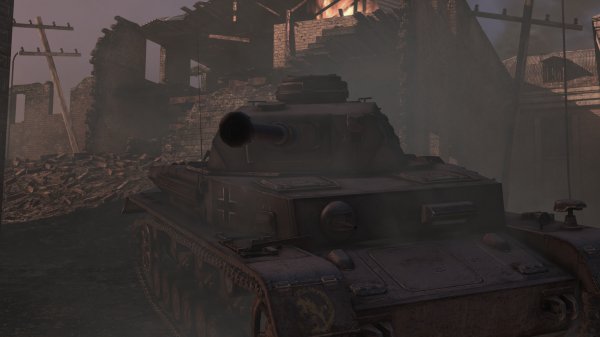
Beyond this we have added a whole new level of functionality and interaction to the tanks. The first thing that we’ve done is what we call a virtual interior. The player can actually look around in the interior and very easily interact with the interior. Want to look out of a view slit, just look at the slit and press a button. Want to stick your head out of the hatch, look up and press a button. It is all very streamlined and allows the player to do a lot of things but very simply. We’re actual giving players very near to a tank simulation’s level of functionality, but streamlined so it is easy to use and accessible. Speaking of view, one of the things we discovered after we shipped the original Red Orchestra was that while the view inside a tank is somewhat limited, there are a LOT of view ports, view slits, and periscopes that the tank crew had at their disposal to get a better view of what is happening outside of the tank. So for ROHOS we have added the ability to very easily interact with any of these and get a better view of the situation. Another area which we’ve greatly expanded on is the damage system. The original RO had a generalized damage system with just a few key damageable components. For ROHOS we’ve expanded this to include a very broad range of damageable components with accompanying gameplay effects. Things such as damaging optics, damaging the engine and transmission, damaging the turret rotation mechanism, hitting the fuel tank, drive sprocket, treads and more are now included. And now shots that penetrate the tank armor can hit the crewmembers inside.
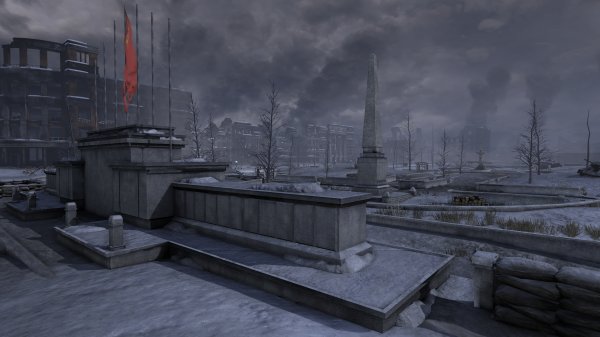
RPS: Can you repair tank damage? And what amount of damage can be repaired?
JG: We are actually a bit torn on repairing damage on the tanks. Realistically there aren’t a lot of repairs that you could do to a tank within the time frame of a match in ROHOS. But not allowing repairs leads to unrealistic gameplay where everyone always fights to the death, instead of retreating for repairs when they are too damaged to continue fighting. We’re looking at the idea of allowing tanks to be repaired at the resupply areas. This is something we’re still prototyping and trying different things, so we’ll have to wait and see what the final system ends up being.RPS: Will we see any playable vehicles other than tanks?JG: For the initial release we’re going to ship with two medium tanks – the T34 76 and the Panzer IV. I know that might not seem like a lot, but for ROHOS our goal with the vehicles was to focus on quality over quantity. In tank simulations you typically only see a couple of drivable tank in the game. This is due to the sheer amount of work required to implement a vehicle at that level of detail. And for ROHOS, we’re actually implemented tanks at a level of detail and functionality far beyond tank sims or any existing game. Tripwire has a philosophy though when it comes to releasing games. We like to give gamers a lot of value for their money when they buy a game from us at launch, but they can also count on getting even more out of their game in the form of free content packs. We’ve put out a LOT of free additional content for the original Red Orchestra as well as Killing Floor. So we do already have four additional vehicles in production and those will likely come out in our first free content pack not long after the launch. The four additional vehicles will be two more tanks and two troop transports.
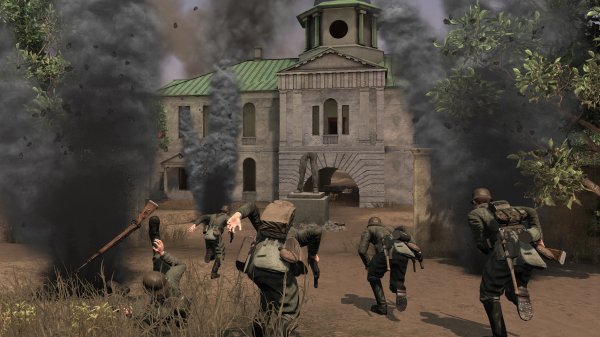
RPS: Awesome as they were, in the past I’ve found tanks in RO can be a source of frustration- either getting slaughtered by them as a fleshy little infantryman, or finding yourself inside one with a crew that doesn’t know what they’re doing. Were you planning to address either of these situations?
JG: A lot of our work for ROHOS for both tanks and infantry has been to make a game that stays true to its realism roots while also being much more accessible than the original game. Infantry versus tanks is a tricky thing to balance in a game that aims to be both realistic and accessible, because tanks really should do very well against infantry. For us one of the things we learned during and after the release of RO: Ostfront was that making good combined arms gameplay is about putting tanks in situations where they are vulnerable to infantry. We found that in the right setting, tanks can be at a serious disadvantage to infantry. In the first game we put infantry in a lot of scenarios fighting tanks in their element – wide open landscapes fighting infantry. These scenarios end up with happy tankers and unhappy infantrymen. So we’ve taken what we’ve learned from the first game and applied that to the levels in ROHOS. Now when we do combined arms levels, we make sure that there is plenty of cover and concealment so that the infantry can more easily get the drop on the tanks. We’ve also given the infantry some additional tools for their tank fighting arsenal in the form of semi-automatic anti tank rifles, and anti tank grenades.

Regarding making tanks less frustrating, let me just say – we hear you. Tanking in RO: Ostfront at its best was an amazing experience you couldn’t get anywhere else, but at its worst could be an exercise in frustration. The biggest issue we found was that tanking with other random public players was extremely frustrating, especially if they didn’t know what they were doing or weren’t using their microphone. To address this we’ve made a lot of changes for ROHOS. First off, players will never have to tank with some one that they don’t want to. When a player chooses a tank role they have the option of locking the tank, or allowing other people to join their crew. Another frustrating thing was standing around waiting for a tank to spawn. Tankers now always spawn inside their tank, and respawn with their tank. Additionally every level will feature enough tanks so that every tanker will have a tank. Since tanking with random public players was frustrating in the first game players usually ended up tanking by themselves. Because the tanks in the game were designed to be crewed by three people, tanking by yourself was cumbersome requiring the player to constantly switch between positions. This was neither realistic nor fun, as a tank would never leave base in a real battle with just one tank crewman. So to address this the big feature we’re adding that I’ve touched on a little bit already is the AI crew. When you choose to tank by yourself you will now have a fully functional intelligent AI crew at your disposal. You can choose to play any of the main positions in the tank still, but now the AI will handle the rest for you. If you just want to drive around, the AI crew will man the MGs and take out infantry for you, or fire the main cannon at enemy tanks. If you want to operate the main cannon, you can use your movement keys to easily give orders to the driver to move the tank. If commanding is your thing, you can take the command position and designate targets for the AI crew to attack, give locational movement orders to the tank driver using a 3d command widget or the overhead map, give normal movement commands using the movement keys, spot artillery targets with your binoculars, and more.
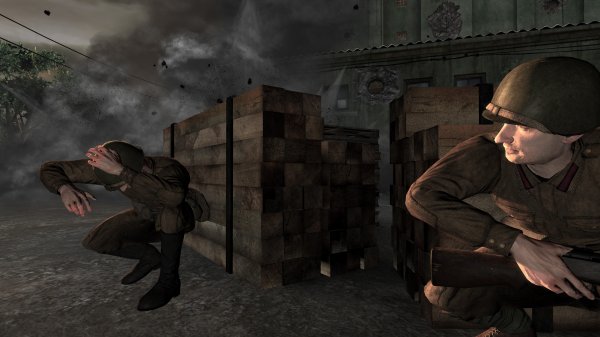
And with a full live AI crew the player can instantly switch between any of these positions assuming the role of that AI crewmember, and the AI will dynamically take over the functionality in the position you just left. Now there is a catch. If an AI crewmember is killed the player will need to move to the position of the dead crewmember to perform the function of that crewmember. And transitions to the position of a dead crewmember will be a real first person animated transition that will take time. The good news is, if you lose a crew member you can go to a vehicle resupply station and get your tank reinforced with fresh crewmembers. And the player can mix and match other human players with the AI crew members. There are a lot of other things we’ve done to refine tanking and make it more accessible. In the first game people found the in tank view very limiting, either because they didn’t understand that you could zoom in on the view slits or open the hatches, or because we didn’t provide all of the views that the real tank actually had. So for the new game we will have a training mission that will familiarize the player with the tank functionality, including the use of the view system so they don’t get in the battlefield and think the only view they have is a tiny slit that is feet from their face. Additionally, as I mentioned before we’ve added a lot of additional view ports that the real tanks actually had, and created a system to easily look out of them. This makes the view system a lot more robust and tanking in general easier in the new game. There are a lot of small things too like refining the controls. One example would be we now use a more intuitive mouse based aiming system which better mimics how players aim with their first person weapon as an infantry soldier.
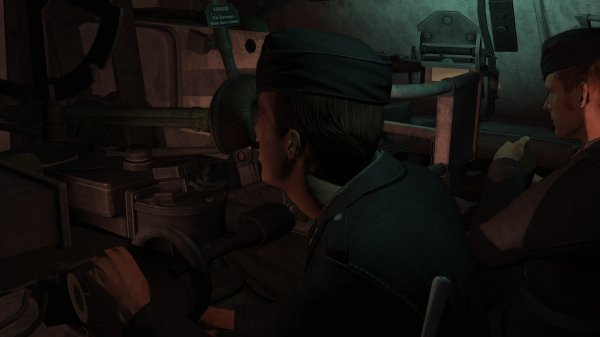
RPS: Hang on. If you can choose to lock your tank with an AI crew, do the AI count towards your team’s playercount? Because if they don’t you’re giving your side a couple of bots, for free, no? And if they do, you’re limiting how many people get to tank on your team.
JG: The AI Crew doesn’t count toward the playercount. On combined arms maps, the infantry are good for fighting in the buildings and the tanks are good in the open areas. So for the players it will be a decision of where they want to allocate their human players. For example, let’s say you are playing with 64 players and there are ten tanks. You could have 1 human player in each tank with a full AI Crew and then have 54 infantry players. Or you could have 30 human players in tanks (3 human players filling the playable positions in each tank) and then only have 24 infantry players. Or you could do something in between.It all sounds pretty complicated, but the way it is presented to the players in game is pretty simple and streamlined. The key thing here is that every tank rolls out with a full crew either human or AI NPC, and no one is ever left standing around at the base waiting for a tank to appear.
RPS: I’d guess that finding statistics to build a simulation of WW2 small arms is a lot easier than finding info on tanks. How’s researching this been?JG: Basically, small arms were around in huge quantities and can even be bought in working order today. People still use them. Tanks weren’t – and aren’t. The tanks of the period were practically obsolete by the end of the war and there are very few left running today. Tech was moving so fast that there was also relatively limited research conducted on the “old tech” – everyone was too busy gearing up for the cold war. The research and documentation that WAS done had been done under war-time conditions, was sketchy, too much guess-work – and half of it got lost anyway.All this adds up to making research on tanks a complete nightmare – certainly at the level of detail we needed. Exteriors weren’t too bad. The interiors were really difficult – mostly some old photos, a few bits of plans, plus recent photos of the interior of (mostly) trashed old tanks. The T-34 is easier – there are at least more modern examples still around, although that means interpreting what the 1942 version was like. Add to that the whole business of armor technology and penetration in the 1940s, of course, and we’d have to say it has been very hard.We worked with museums and archives (Bovington, Littlefield’s, Patton Museum for a start) to dig out the info, as well as some individuals who have made WWII armor tech their life’s work! And all of that is just to get the information – after that we’ve done a lot of additional work interpreting it and turning it into meaningful, working, accurate models in game!

RPS: If you were a tank, what kind of tank would you be?
JG: If you are talking about the tanks that are in ROHOS, the tanks are pretty well matched. If you are talking about WWII tanks in general, I would say the Panther. It was a great balance of armor, mobility, and firepower. Funny you should ask this though, as there is a long standing debate on the Red Orchestra forums about what the greatest tank of WWII was that has almost taken on a life of its own. As a matter of fact, it has gotten so big, that if you google “greatest tank of ww2” the discussion on the Red Orchestra forums is the top link that pops up. This thread has been going on for 4 years and has reached over 30 pages. Most people there will say that the Russian IS-2 heavy tank is the best tank of WWII. It has reached the point where it is almost an inside joke among RO fans. We even have an IS-2 emoticon in our forums (http://forums.tripwireinteractive.com/images/smilies/is2.gif). And people have forum signatures…
RPS: Thanks for your time.




Sounds awesome.
I hope we get more gameplay videos soon, which explain some of the vehicular things.
When is a likely release timeframe for this game? Think it is now on my buy list!